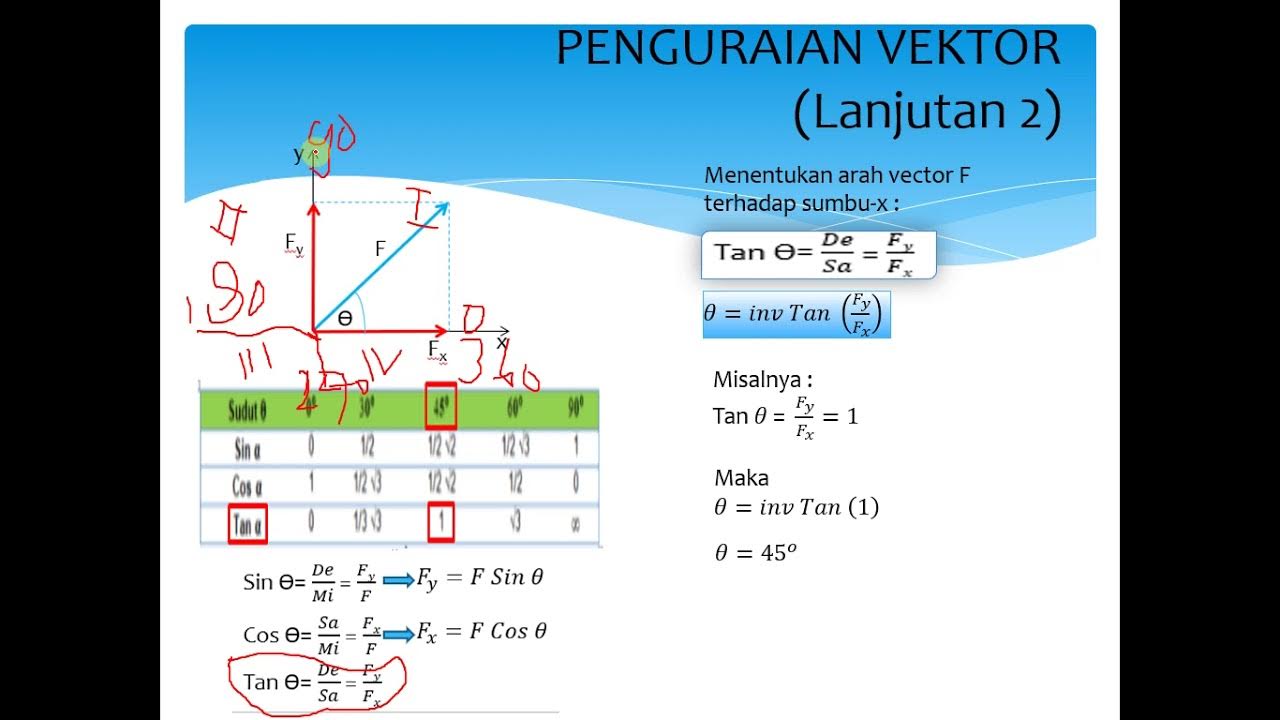What Are Vector Components?
Summary
TLDRThis video tutorial explains vector components, addressing what they are and how to identify the X and Y components of a vector. Vectors are quantities with both magnitude and direction, and the video demonstrates how vectors directed at angles consist of parts called components. Using various examples like boats, airplanes, and tension forces, the video illustrates how vector components describe the effect of a vector in specific directions. Viewers learn how to project vectors onto axes to determine their components. The tutorial also offers action steps for further learning via apps and online resources.
Takeaways
- 📐 Vectors have both magnitude and direction, such as left/right, up/down, or directions like northeast/southwest.
- 🧭 Vector components break a vector into parts along the X and Y axes (e.g., north/south or east/west).
- 🚤 A vector directed at an angle (e.g., northeast) can be split into its X (eastward) and Y (northward) components.
- 🛶 Vector components describe the effect of a vector in a specific direction, like how a boat crossing a river has both eastward and northward movement.
- ✈️ In another example, an airplane flying northwest has two components: a northern and a western velocity, affecting travel time northward.
- 🎨 Vector components can also be used to describe forces, such as tension in wires holding a picture. These forces have both vertical and horizontal components.
- 📊 Mathematically, a vector component is the projection of a vector onto the X or Y axis, allowing calculation of effects in those directions.
- ↕️ Projections of vectors can show which component (X or Y) is larger, depending on the angle of the vector.
- 💡 By projecting vectors onto axes, you can predict the relative sizes of the vector's components in each direction.
- 📝 The video encourages further learning by using an app and website resources to practice identifying vector components and their applications.
Q & A
What are vector components?
-Vector components are the parts of a vector that describe its effect in specific directions, typically along the X and Y axes. For example, a vector directed at an angle can be broken into a horizontal and a vertical component.
How do you identify the X and Y components of a vector?
-To identify the X and Y components of a vector, project the vector onto the X and Y axes. This is done by drawing perpendicular lines from the arrowhead of the vector to the respective axes. The points where the perpendiculars intersect the axes indicate the components.
Why are vector components important?
-Vector components are important because they describe the effect a vector has in a particular direction. For example, in a boat crossing a river, the eastward component affects how fast the boat crosses the river, while the northward component affects how far the boat moves upstream.
What is an example of a real-life situation where vector components are used?
-One example is a boat crossing a river with a northeast velocity vector. The boat’s eastward velocity component determines how fast it reaches the opposite bank, while the northward component affects how far upstream it travels.
How do vector components apply to an airplane flying northwest?
-An airplane flying northwest has two velocity components: a western component and a northern component. The northern component determines how quickly it reaches a location directly north, such as the Canadian border, while the western component shows how far west it travels.
What is the mathematical method to find vector components?
-Mathematically, a vector component is the projection of a vector onto the X or Y axis. This is done by extending the vector and drawing perpendicular lines from its arrowhead to the axes, where the components end at the points of intersection.
How can you predict the size of vector components relative to each other?
-By observing the direction of the vector and projecting it onto the axes, you can predict the relative size of the components. For example, if a vector is more eastward, the eastward component will be larger than the northward component, and vice versa.
What happens when a vector has only one component?
-When a vector is directed purely along one axis, it has only one component. For example, a purely eastward vector has only an X component, while a purely northward vector has only a Y component.
How are vector components applied to forces acting on objects?
-In force diagrams, such as a picture hanging by two wires, the tension forces exerted by the wires can be broken into vertical and horizontal components. The vertical components balance the downward force of gravity, while the horizontal components balance each other.
What action steps were suggested for further learning about vector components?
-The video suggests two action steps: (1) Download the 'Minds on Physics' app and explore the vectors and projectiles module, and (2) visit the website’s tutorial on vector components, found in Chapter 1 of the Forces and Motion in Two Dimensions section.
Outlines

Этот раздел доступен только подписчикам платных тарифов. Пожалуйста, перейдите на платный тариф для доступа.
Перейти на платный тарифMindmap

Этот раздел доступен только подписчикам платных тарифов. Пожалуйста, перейдите на платный тариф для доступа.
Перейти на платный тарифKeywords

Этот раздел доступен только подписчикам платных тарифов. Пожалуйста, перейдите на платный тариф для доступа.
Перейти на платный тарифHighlights

Этот раздел доступен только подписчикам платных тарифов. Пожалуйста, перейдите на платный тариф для доступа.
Перейти на платный тарифTranscripts

Этот раздел доступен только подписчикам платных тарифов. Пожалуйста, перейдите на платный тариф для доступа.
Перейти на платный тариф5.0 / 5 (0 votes)






